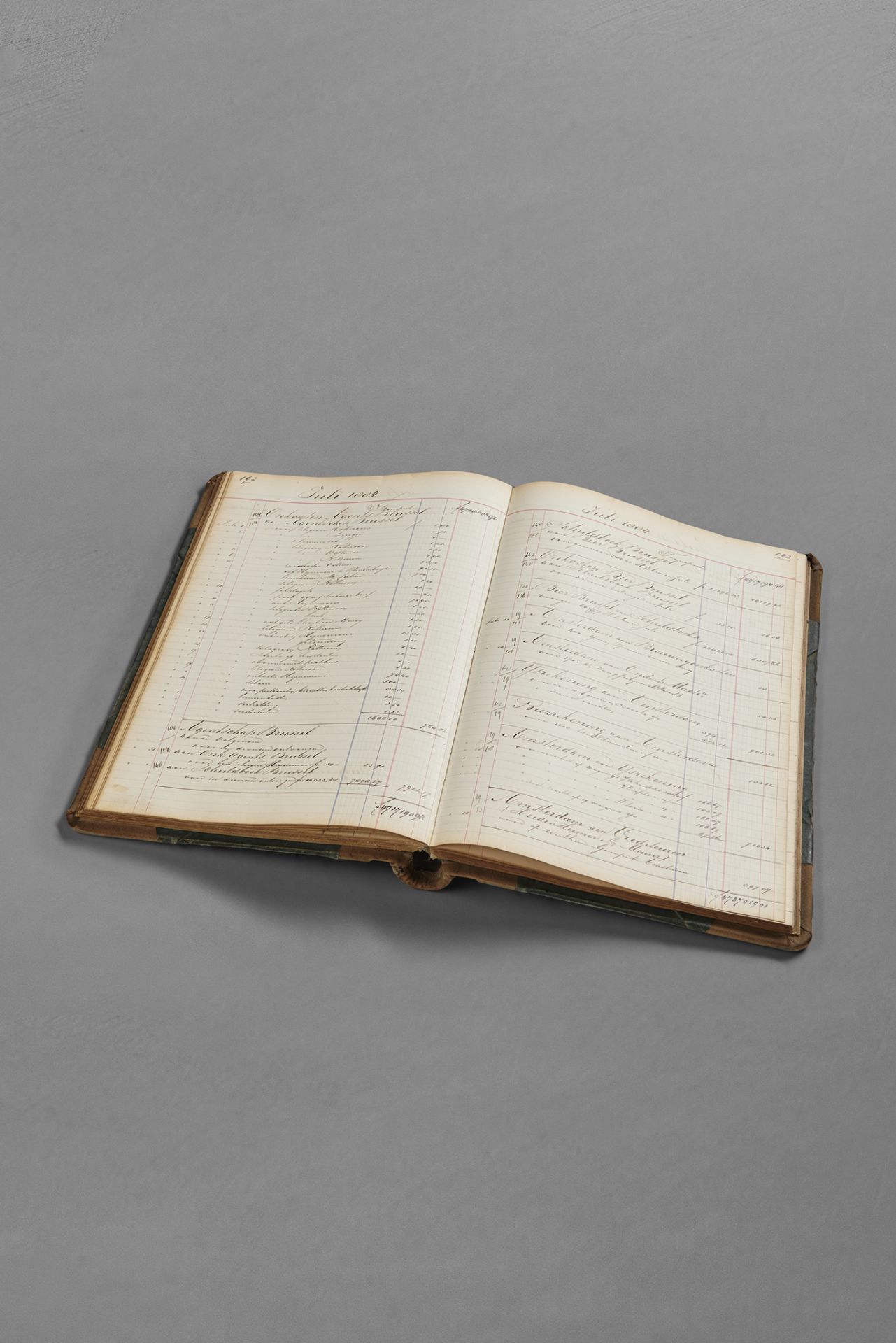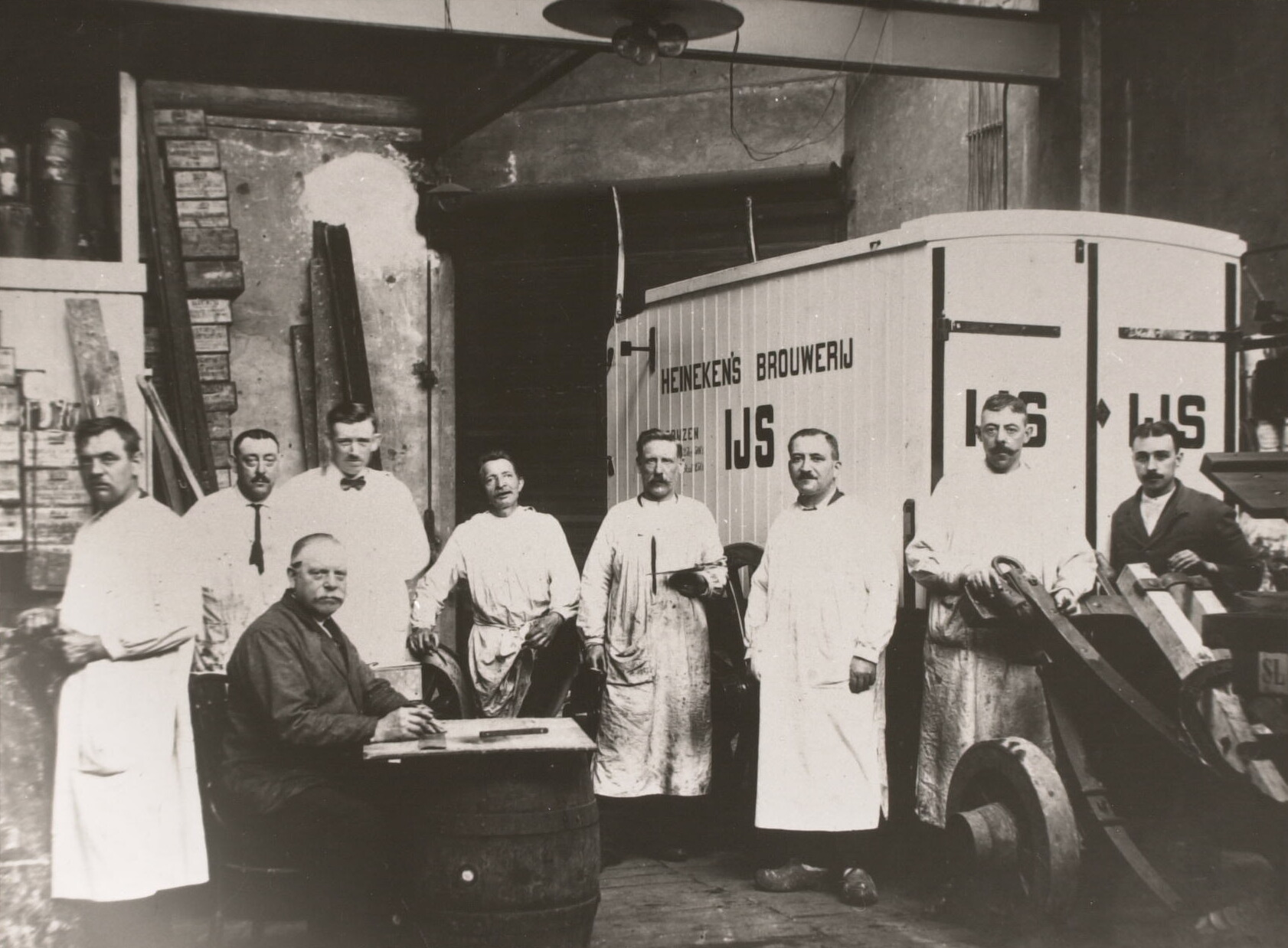INFO
Cash book of the Rotterdam Heineken Brewery, January 1883 - November 1885
1883 -1885
handwriting and print on paper, binding: textile, cardboard
h 40.5 x w 28.5 x d 4 cm

A historical document
The year was 1883, about a decade after the establishment of the Heineken Brewery in Crooswijk. From the very beginning, the employees recorded their income and expenses in this plain cash book. The handwritten entries give a good impression of the high production level the second Heineken plant had achieved since 1874. In this period the Rotterdam Brewery surpassed the Amsterdam Brewery and had to expand with a new, larger malt house.
Thousands of kilos of barley, malt, hops, and coal arrived by ship at the brewery buildings on Linker Rottekade. There were also regular deliveries of hay for the stables and oats for the horses used as draught animals to transport beer over land. These outlays are listed under General Expenses, along with shoeing the horses and repairing and painting the beer carriages. And then, of course, there are the costs of building a new malt house; the place where the barley germinates and dries into ‘malt,’ the basic raw material of beer.
Ice machine
In 1883, brewmaster Wilhelm Feltmann also acquired a new ice machine. Ice bars were needed to keep the yeast mixture between 5 and 10 degrees Celsius. Just like at Heineken Amsterdam, bottom-fermenting beer was brewed in Rotterdam and that had to ferment at these low temperatures. The result was a clear and refined German ‘gentleman’s beer,’ very different from the cloudy top-fermenting ‘working man’s beers’ of the past.
Gypsy wagons
The two ice machines from the early days had too many glitches and a low yield. While visiting the Carlsberg Brewery in Denmark, Feltmann saw a great one, a Linde. It worked so well that beer production could be increased, and the ice bars could be distributed in Rotterdam: quite an improvement for pubs and households that depended on ice from Norway in the summer. The cash book therefore include the income from ice deliveries, done with white horse-drawn wagons . The brewery also sold malt sprouts, the barley by-product ‘spent grain’ as cattle feed and, of course, brewer’s yeast – not only for brewing or baking, but also as an effective remedy for teenage acne !
A treasure trove of information
The cash book from 1883-85 is the first in an endless row of such ledgers in the Heineken Collection from the pre-computer age. They are tangible evidence of how accounting was the backbone of the brewery’s organisation. They also contain a wealth of historical information about how business was conducted in the past, which distribution networks Heineken had, who its customers were, and how faithfully they paid their bills.
